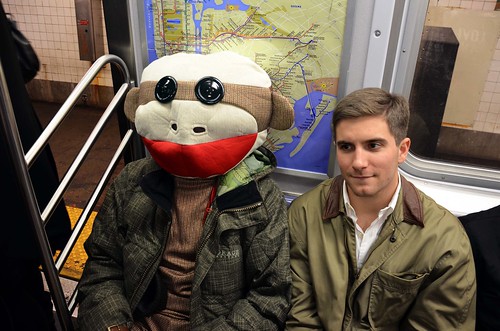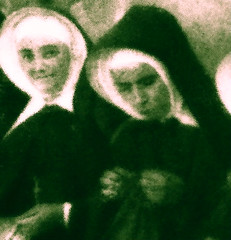Happy Halloween, East Village. Still looking for a costume? Maybe this will inspire you: Contributor Tim Milk, an East Villager who remembers the subway system as a very scary place, recalls a peculiar incident in the late 1990s.
Robbery, brutality, even death used to haunt the New York City transit system during that time many now choose to call “the bad old days.” The manifold horrors that lurked below street level still comprise an indelible legend. If you, alone and vulnerable on the desolate platform, survived the long, long wait for the chronically delayed and broken-down trains, things more loathsome still awaited you on board. Flashers, muggers, rapists – these were the least of your worries. Also riding with you were the bogeymen – the monsters who earned the most fearsome monikers. “The Finger Man” stalked the Lexington line with wire cutters, snipping off the digits of his victims to more quickly steal their diamond rings. That his story was probably just an urban myth was irrelevant – it was well understood that a trip to an outer borough such as Brooklyn could very well be your last.
And so I never went there. The districts outside of Manhattan lay beyond the pale – like lost, forbidden kingdoms. But by 1997, all of this had changed. Through certain deft law enforcement strategies, crime on the subway had vanished. How exactly this was accomplished was not entirely clear, but no matter: people at last felt safe riding anywhere and everywhere. For me it meant happy excursions to all ends of town without the inconvenience of sheer mortal terror.
One fine Sunday I made just such an outing, boarding the Brooklyn-bound F at the Second Avenue stop.
How transforming it was to roll through the dark tunnel that led under the river and then soar up above ground, with the clear light of day suddenly flooding the car. It felt something like being reborn. Two young guys behind me who had been passing the time with ball-game talk now paused to enjoy the view of the canal and vicinity. Thus none of us noticed when two nuns, one of them an African-American and the other white, boarded at Smith and Ninth. After settling down across from me, they commenced to fan through Catholic lifestyle periodicals and confide between themselves in those soft, dulcet tones quite common to nuns. One of the guys, a ruddy-faced red-haired youth, beheld them haloed in the golden light and accosted: “God bless you, good sisters!”
They didn’t look back. “May God bless you too,” one of them answered.
“I will say a Hail Mary,” he added, “for all your good work.” And his friend, who was Latino, promised that he, too, would say a Hail Mary. The nun on the aisle lifted a hand to acknowledge the prayers.
“Thank you, sisters, for coming to the aid of my family,” the friend added in Spanish.
“You are welcome,” the black nun said. “Bless you.”
Suddenly both young men jumped up and fell into the seat ahead of the nuns. They smiled broadly. The Irish lad said: “Do you know St. ______’s?” he asked. That’s where I graduated last June.”
“The name is familiar, yes,” said the white nun with some hesitation.
“And the sisters of St. _____, you must have heard of them, right?” the Latino youth asked, showing off his school ring.
“Oh of course, of course,” they mumbled rather nervously. I myself was beginning to wonder just what was going on here. A particular sense of doleful apprehension (that particular unease so common in the bad old days) began to spread out from the presence of the youths and the persons of the nuns.
“My rosary,” the young Latino said, withdrawing it from his pocket. “I carry it always.”
“That’s good, good…” the nuns said nodding, their faces tightening.
“We do volunteer work,” the Irish lad said. “Catholic Charities Brooklyn and Queens!”
“We can help!” the Latino lad suggested, and the two beamed in affirmation.
“But I don’t recognize your habit, sister,” the red-haired one said. “What is your order? Is it outside of Brooklyn?”
The black nun then fixed a steely gaze on him. “We don’t have an order,” she said with a sudden sharpness. “We’re cops.”
Their jaws dropped open. So did mine. Indeed, under their ample blouses it was easy to contrive that both were carrying side arms. Their shoes, too, peering from under the carelessly hemmed habits, were certainly not the sensible mules most nuns would wear. Instead they were black and rather paramilitary in style.
The devoted young men backed off, all silent and wide-eyed, and returned to their seats.
Together we plunged back into the tunnel, that purgatory of darkness that was once the lair of bandits and fiends. The train was just pulling into the Seventh Avenue station when the nuns suddenly rose to their feet.
“And we would appreciate it,” said the black nun, sounding much more like a seasoned policewoman, “if you kept all this to yourselves.” The devoted young men nodded in unison. The nun then shot me a dreadful stern look. I also gave her a nod.
And with that the two sisters exchanged a glance, and then a smirk, bowed their heads, and floated off the train.





